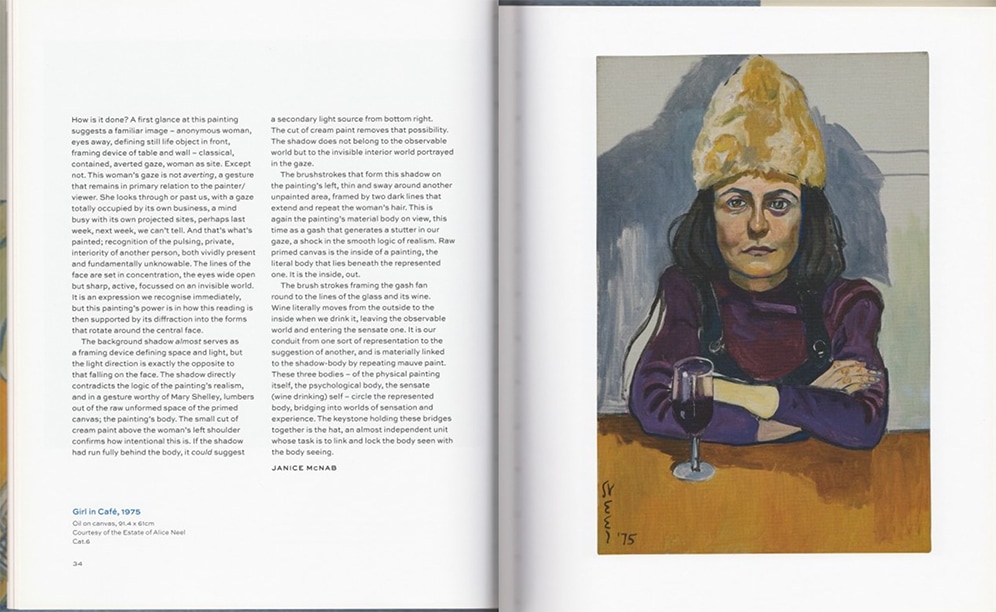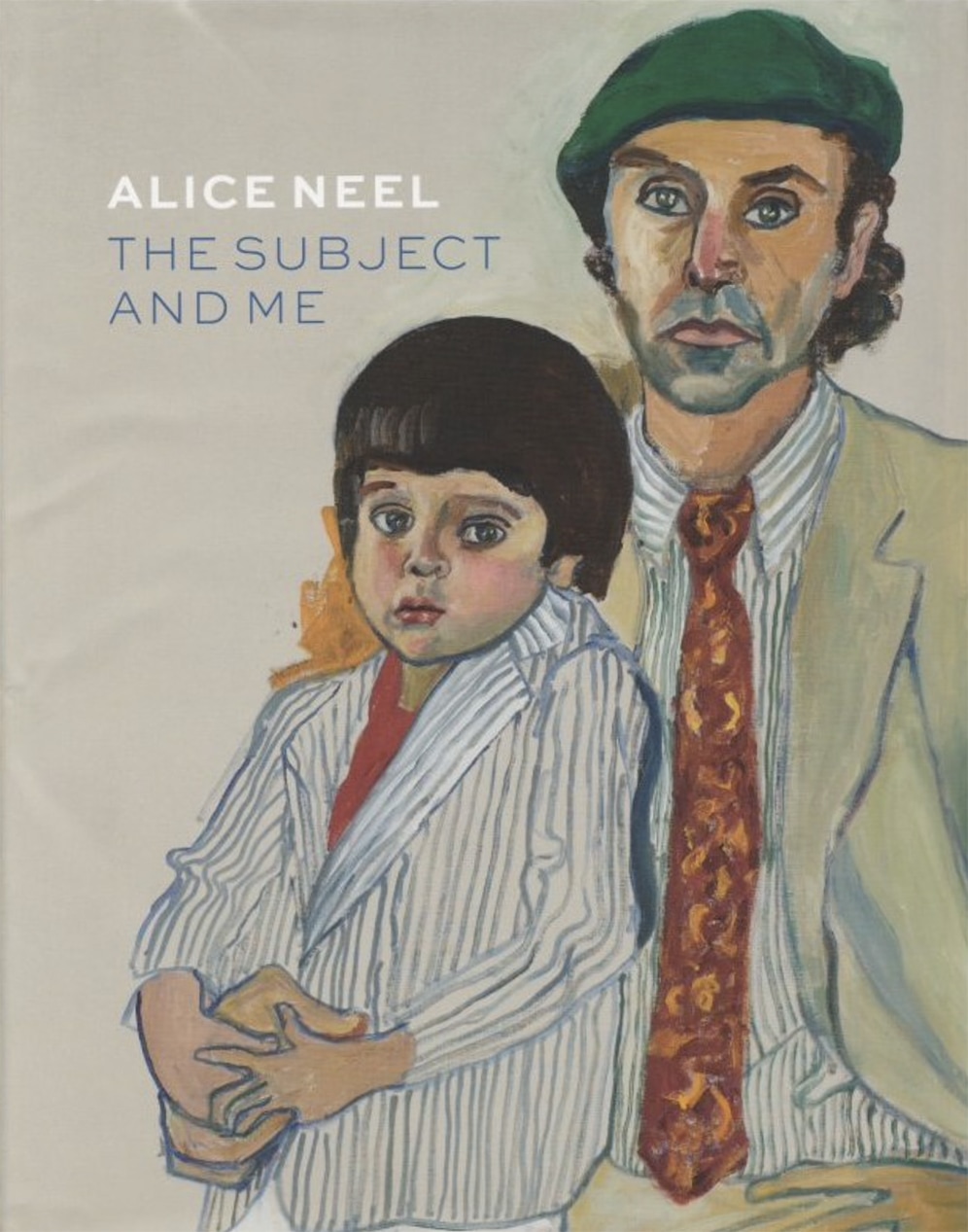JANICE MCNAB – CATALOGUE ESSAY IN ALICE NEEL, THE SUBJECT AND ME, TALBOT RICE GALLERY UNIVERSITY OF EDINBURGH (2016)

How is it done? A first glance at this painting suggests a familiar image—anonymous woman, eyes away, defining still life object in front, framing device of table and wall—classical, contained, averted gaze, woman as site. Except not. This woman’s gaze is not averting, a gesture that remains in primary relation to the painter / viewer. She looks through or past us, with a gaze totally occupied by its own business, a mind busy with its own projected sites, perhaps last week, next week, we can’t tell. And that’s what’s painted; recognition of the pulsing, private, interiority of another person, both vividly present and fundamentally unknowable. The lines of the face are set in concentration, the eyes wide open but sharp, active, focussed on an invisible world. It is an expression we recognise immediately, but this painting’s power is in how this reading is then supported by its diffraction into the forms that rotate around the central face.
The background shadow almost serves as a framing device defining space and light, but the light direction is exactly the opposite to that falling on the face. The shadow directly contradicts the logic of the painting’s realism, and in a gesture worthy of Mary Shelley, lumbers out of the raw unformed space of the primed canvas; the paintings’ body. The small cut of cream paint above the woman’s left shoulder confirms how intentional this is. If the shadow had run fully behind the body, it could suggest a secondary light source from bottom right. The cut of cream paint removes that possibility. The shadow does not belong to the observable world but to the invisible interior world portrayed in the gaze. The brushstrokes that form this shadow on the painting’s left, thin and sway around another unpainted area, framed by two dark lines that extend and repeat the woman’s hair. This is again the painting’s material body on view, this time as a gash that generates a stutter in our gaze, a shock in the smooth logic of realism. Raw primed canvas is the inside of a painting, the literal body that lies beneath the represented one. It is the inside, out.
The brush strokes framing the gash fan around to the lines of the glass and its wine. Wine literally moves from the outside to the inside when we drink it, leaving the observable world and entering the sensate one. It is our conduit from one sort of representation to the suggestion of another, and is materially linked to the shadow-body by repeating mauve paint. These three bodies— of the physical painting itself, the psychological body, the sensate (wine-drinking) self—circle the represented body, bridging into worlds of sensation and experience. The keystone holding these bridges together is the hat, an almost independent unit whose task it is to link and lock the body seen with the body seeing.
